Northern Europe Cruise Options

A European cruise is a relaxing and cost-effective way to visit numerous countries in a single trip. Early-booking discounts and the all-inclusive nature of cruising enhance the good value this mode of travel represents, which is also an efficient use of time. A cruise is an effortless way to travel between cities and countries, sampling the highlights of each destination, then enjoying a good night’s sleep while your ship takes you to the next port of call.
Northern Europe cruises vary in length with the majority of itineraries ranging from seven to 14 days. The most popular are cruises of the Baltic Sea, which is bordered by Denmark, Sweden, Finland, Russia, Estonia, Latvia, Lithuania, Poland and Germany. Copenhagen and Stockholm are major base ports for Baltic cruises, as are Amsterdam and the British ports of Dover, Harwich and Southampton. Popular Baltic ports of call include Helsinki, Tallinn and Warnemünde (for Berlin). St. Petersburg is the premier port of call on a Baltic itinerary, with most ships docking here overnight so their passengers can spend two full days exploring this beautiful and historic city.
The Norwegian capital of Oslo is frequently included in Baltic itineraries, and is sometimes a port of call on cruises of the Norwegian Fjords and/or British Isles. The main base ports for British Isles itineraries are Southampton, Dover and Harwich. These itineraries often include a port call at Le Havre (for Paris) or Cherbourg (for the D-Day beaches), as well as one or two Norwegian fjords. Iceland and Greenland are usually included in transatlantic voyages that end or originate in New York or Fort Lauderdale.
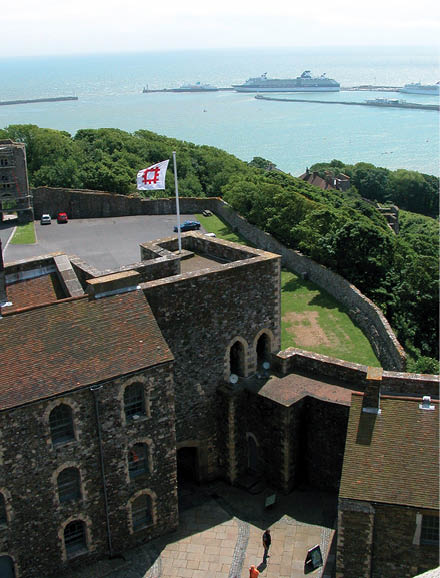
Dover is a major base port for Northern Europe cruises.
The Northern Europe cruise season begins in May as ships leave the Caribbean and head across the Atlantic. June and July are the most popular cruising months in Northern Europe, due in large part to Scandinavia’s long hours of daylight at the height of summer. By late August or early September most ships are leaving northern waters, many of them heading to the Mediterranean or back across the Atlantic. Spring and fall repositioning cruises between North America and Northern Europe, or between Northern Europe and the Mediterranean, often feature less-visited ports, such as those in Iceland and Greenland, or those along the west coast of France.

A small luxury ship approaches Douglas Bay on the Isle of Man.
The array of ships servicing Northern Europe includes modern megaships, mid-sized premium ships and small luxury ships which can dock at the smaller ports of call. The Glossary of Cruise Lines at the back of this book provides a summary of the cruise lines deploying ships to Northern Europe.
When choosing a cruise, you’re well advised to visit a travel agent who specializes in cruises. Look for an agency displaying the CLIA logo, indicating its agents have received training from Cruise Lines International Association. The cruise lines strongly encourage their clients to book through a travel agent with CLIA accreditation, and these qualified agents are a good source of information, with personal knowledge of many ships. They are able to provide pertinent detail regarding on-board atmosphere, cabin selection and pricing. Supplied with the relevant information, i.e. which countries or specific destinations you would like to visit, the length of cruise you wish to take, and the type of onboard atmosphere you are seeking, a travel agent can recommend suitable itineraries and ships. They are also kept up-to-date by the cruise lines regarding special pricing.
It’s best to book early for the discounts, selection and chance to upgrade your cabin category as the ship fills up. It’s tempting to wait for last-minute deals, but the money you save will likely be negated by the higher price of your airline ticket. The best time to book international air flights is usually two to three months before departure.
Flights can be booked through the cruise company and, if offered, it’s worth paying the optional variation fee, which lets you pick your dates of travel, airline, routing and advance seat assignment. Hotel packages are also available through the cruise lines, enabling passengers to spend an extra day or two in port before boarding their ship or after disembarking at the end of a cruise.
How best to spend your time ashore is a big issue for most cruisers. There is no single answer, but plenty of options. One approach is to study your ship’s itinerary and decide, port by port, what your priorities are in terms of what you want to see. Then read the ‘Getting Around’ information near the front of each chapter in this book to get a fix on how easy (or challenging) it is to explore a specific port on your own and decide whether you want to do some independent sightseeing or book a guided tour.
The cruise lines offer organized shore excursions for the convenience of their passengers, and these are described on their websites, in a leaflet enclosed with your cruise documentation, and at on-board presentations given by the ship’s shore excursion manager. Shore excursions can be pre-booked online or after you have boarded the ship, with cancellations allowed up to the day prior to your tour. The prices for shore excursions vary, depending on their length (half day / full day) and the activities involved. Most shore excursions are fairly priced and the local tour operators used are reliable and monitored by the cruise companies, with the added advantage that the ship will wait for any of its overdue excursions.
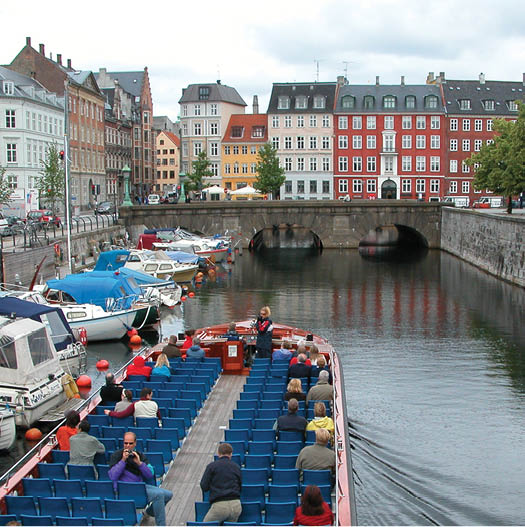
Tour boats are a popular sightseeing option in European ports.
Full-day shore excursions offered by the cruise lines are usually a combination of driving tour, guided walking tour and lunch at a local restaurant, with an interlude for shopping. The tour guides are local residents providing narration of the sights and answering any questions you might have. When joining a ship-organized excursion, the decision to tip your guide or driver is personal and if you like the service, a small tip is appreciated.
Customized shore excursions can be arranged by travel agents who belong to a consortium. There is no cost saving, but the advantage is that you will be with a smaller group and see exactly what you want. Some cruise lines will arrange a driver/guide and private vehicle for passengers preferring a customized shore excursion.
Independent-minded passengers need not feel that pre-booked shore excursions are their only option when exploring various ports of call. If the ship docks right beside a town or city centre, you can simply set off on foot to do some sightseeing and shopping. Hop-on/hop-off sightseeing buses are a good way to get around and see some of the attractions.
If the town centre is a few miles from the port, the cruise lines usually offer a shuttle service for a small charge. In instances where the city is several hours away from its seaport, such as Paris and Berlin, one option is to take a ship-organized excursion that provides transportation to and from the city centre but leaves you to see the sights on your own before reboarding the coach at a pre-appointed time for the ride back to the ship. This is a good option for passengers who like the idea of exploring these cities on their own but wish to avoid any anxiety about getting back to the ship on time. A tour guide on board the coach will provide an overview of the city and sightseeing tips during the drive in, as well as answer any questions.
Another option for independent sightseeing is the train. Train travel in Europe is very efficient and is a convenient way to see a port’s nearby attractions. The ship’s shore excursion manager will likely have a current schedule, which is also posted at the local train station. Double-check the schedule at the other end before leaving the station to take in the local sights. Although the trains generally run on schedule, it’s best not to plan your return train ride too close to the ship’s time of departure, just in case there’s an unforeseen delay. Local currency is sometimes needed to purchase a ticket although most ticket vending machines accept credit cards. (A rail pass is another option for passengers planning an extended stay in Europe before or after their cruise.)
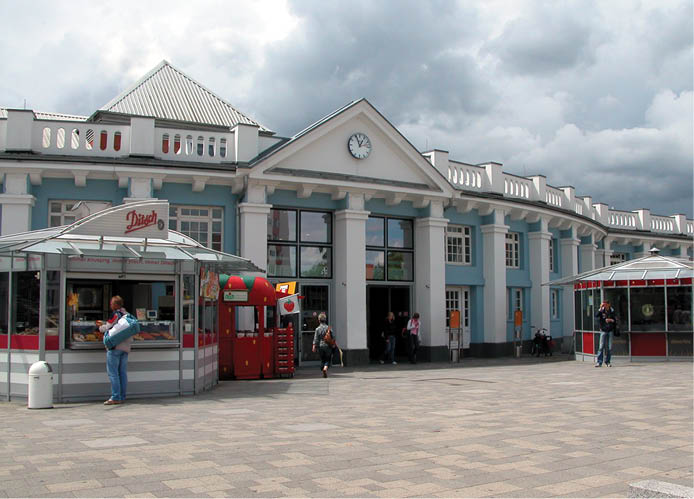
Rostock’s main train station.
The local buses and tram cars are often a good way to cover short distances, but are not recommended for longer trips, as they make frequent stops and are not always as reliable as trains for keeping to their schedules. Taxis may seem expensive, but if you’re splitting the fare with a few others it can be more economical than a ship-organized excursion. Renting a car or motor scooter is often a good way to explore a rural destination, but it’s not recommended when visiting large cities where traffic can be extremely congested and fast paced.
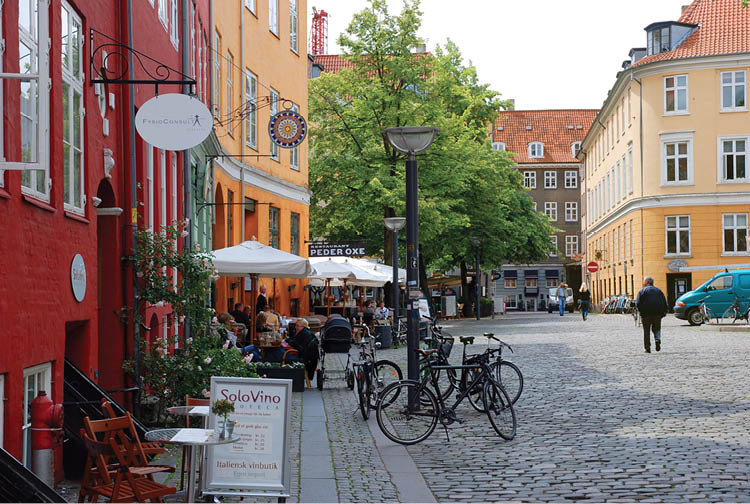
The car-free cobblestone streets of Copenhagen invite walking and cycling.
Bicycling is a common mode of transport throughout Europe, and this is another option for tourists. However, walking is often the simplest and best way to view the local attractions. If this becomes tiring, hop-on/hop-off buses operate in most tourist-oriented cities, and public transit (i.e. underground rail, buses and trolley cars), are usually an efficient option. Please refer to the ‘Getting Around’ section in each chapter for detail on specific ports.
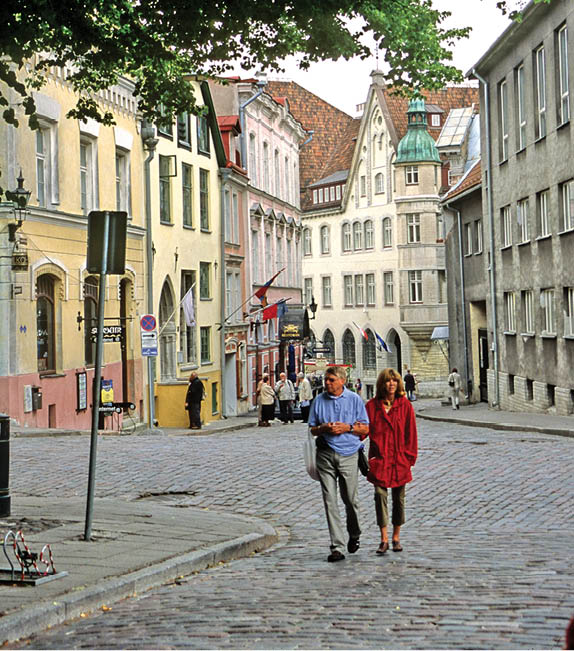
The streets of Tallinn.
Popular attractions in Europe’s major cities attract long line-ups at the height of the summer season. To avoid waiting in line to purchase entrance tickets, there are several options. These include buying beforehand a city tourist card that provides fast-track entry into the popular attractions (as well as unlimited travel on public transit). These can be purchased online, as can individual tickets to specific attractions. Another option is to book an organized tour. Also, keep in mind that museums are generally closed one day a week (usually Monday or Tuesday) as well as on national holidays, so visit their respective websites beforehand to determine access on the date you will be there. Places of worship are often closed to tourists on Sundays,
Even when taking a guided tour, there is often a fair amount of walking involved, so be sure to wear comfortable, rubber-soled shoes. In medieval towns and historic city quarters, where shopping streets are often designated pedestrian zones, on foot is frequently the only way to explore the winding cobblestone streets and squares.
If time allows, fly to your port of embarkation at least a day before the cruise begins, thus avoiding the stress of making same-day travel connections. Better yet, stay two or three nights at your embarkation port to recover from jet lag, relax and have time to enjoy the local sights.
Copenhagen, Stockholm and Amsterdam are all base ports for Northern European cruises, as are the British ports of Southampton, Dover and Harwich, which are less than two hours by road or rail to London. Thus, you could, for example, fly to London and spend a few days in this famous city before embarking on your cruise, and spend a few more days at the end of your cruise touring the English countryside before flying home from London.
Most cruise lines offer an air/hotel package that can be booked in conjunction with your cruise (check with your travel agent). The hotel packages offered by the cruise lines usually utilize 4- and 5-star hotels, thus ensuring their clients a consistent level of comfort and service, and transfers between hotel and pier are included. If you’re booking a hotel independently, reservations are critical in the major cities. Hotel recommendations are included in this book’s chapters covering London, Stockholm, Amsterdam and Copenhagen.
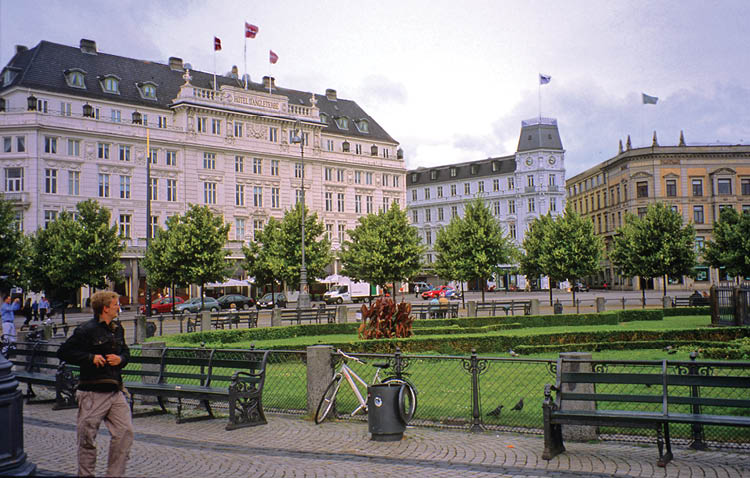
The five-star Hotel Angleterre in the heart of Copenhagen.
Once you have checked into your hotel, remember that the concierge and front desk staff offer a wealth of information for foreign visitors. They can direct you to the best shops and restaurants, and will usually provide miscellaneous services upon request, such as obtaining information on local tours or calling a taxi and confirming the destination and fare with your driver. If you’re part of an organized cruise-tour, an experienced guide employed by the cruise line will be available to answer any questions (see next section).

With a rental car you can explore country roads and stop at places along the way, such as Arundel in the south of England.
A cruise is a perfect opportunity to combine a vacation at sea with a land-based holiday, and a fully escorted cruisetour is an ideal way to see more of a European country. The tours offered by the cruise lines are a seamless form of travel, for the cruise companies maintain the same level of service on land as at sea, with well-planned itineraries, first-class hotel accommodations and professional tour direction. Hotels are centrally located, within walking distance of major attractions and shopping streets, and several hosted meals are often part of the package, while plenty of free time allows clients to do a bit of independent sightseeing, leisurely shopping or lingering in a sidewalk café. The group travels by comfortable motor coach or high-speed train, and the tour guides employed by the cruise companies are well-educated and highly qualified to introduce visitors to the history, culture and cuisine of the country they are visiting. All tours must be booked at the same time as the cruise, as part of a cruisetour package. Cruisetour itineraries vary with each cruise line. See the Cruise Lines Glossary at the back of this book for specific tours each cruise line offers.
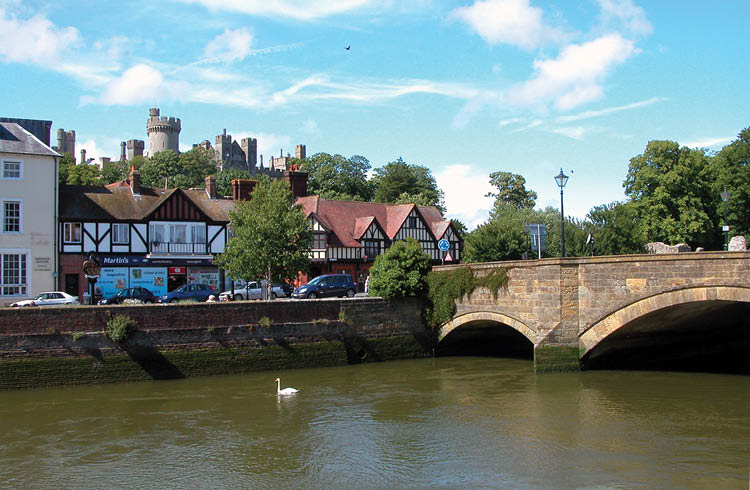
If you plan to embark on an independent tour outside the major cities, your options include renting a car or purchasing a rail pass. If you cherish total independence and the freedom to meander along country roads, stopping on a whim to admire a valley view or visit a picturesque village, then consider renting a car. Obtain an International Driver’s Permit before leaving home if you’ll be travelling in areas where you are not fluent in the language.
When reserving a car, confirm a number of details, such as whether the ‘all-inclusive’ rate includes taxes, drop-off charges and unlimited kilometres. European cars are generally smaller than North American models, with a ‘compact’ comfortably holding two people and two pieces of luggage; the next size up is usually worth the extra cost. Standard-shift transmissions are popular in Europe, but automatics are available in larger cars at higher rates. In Britain, where driving is on the left-hand side of the road, the steering wheel is on the right side of the car. If you plan to use a credit card for insurance, ask for a copy of the policy’s coverage; theft protection insurance is also required in some countries. (Visit autoeurope.com or autoeurope.ca for more information on car rental.)

A high-speed TGV train travels between Paris-LeHavre.
Rail travel is another option for independent travel in Europe. It is efficient and comfortable, and is a relaxing way to see the countryside as you settle into your window seat and watch the scenery slide by (or whiz by on a high-speed train). An extensive rail system connects countries, cities, towns and villages, and most train stations are centrally located – whether in a resort town or a large city – so your hotel will likely be just a short taxi ride away.

The Eurostar departs from London’s St. Pancras International Terminal.
In 1958, Western Europe’s railroads developed the idea of an easy-to-use, multi-country, pre-paid ticket for unlimited mileage use, and that concept evolved into the popular Eurailpass, which now comes in a variety of forms. The range of passes offered by Rail Europe is exhaustive, including the EurailDrive Pass with which a person can combine four days of unlimited train travel with two days of car rental through Avis or Hertz. The flexible Eurorail Select pass provides unlimited first-class train travel within a two-month period for lengths of five, six, eight and 10 days, and is valid in four bordering countries.

St. Pancras International Terminal.
To obtain more information about Rail Europe’s selection of passes and point-to-point tickets, visit the company’s website at raileurope.com. Rail passes must be purchased before you leave for Europe, and reservations are required for some trains. Porters and luggage carts are not always available, so you must be prepared to handle your own baggage if travelling by train.
Rail travel between London, Paris and Brussels was revolutionized in 1994 with the opening of the Channel Tunnel. Originally high-speed trains would depart London’s Waterloo Station on existing rail track, then switch to a high-speed track just outside London for the remainder of the journey through England to the southeast coast and under the English Channel to France and Belgium. Upon the opening of central London’s St. Pancras International Terminal in 2007, the Eurostar now travels on high-speed track the entire way. This has shaved an average of 20 minutes from the trip, with the Eurostar arriving in Paris two hours and 15 minutes after departing London. The London-to-Brussels train ride is an hour and 51 minutes. (For more information, visit www.eurostar.com.)
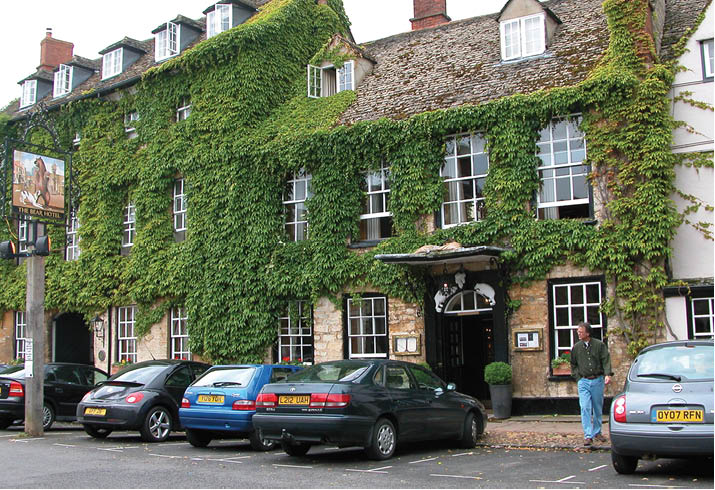
Hotel accommodations in rural England include original coaching inns, such as The Bear in Woodstock.
In addition to city hotels, another type of accommodation to consider in Europe is a hostel. These used to be large dormitories with communal bathrooms but many of today’s hostels feature family rooms with private bath that can accommodate four or more guests. Visit www.hostelseurope.com for more information. If you’re planning to spend a week in Paris before or after your cruise, renting a fully furnished apartment is a popular option (visit www.parisattitude.com). In Britain, rural accommodations include modified castles, manor houses and original coaching inns replete with oak beams and stone fireplaces (for more information, see www.visitbritain.com).